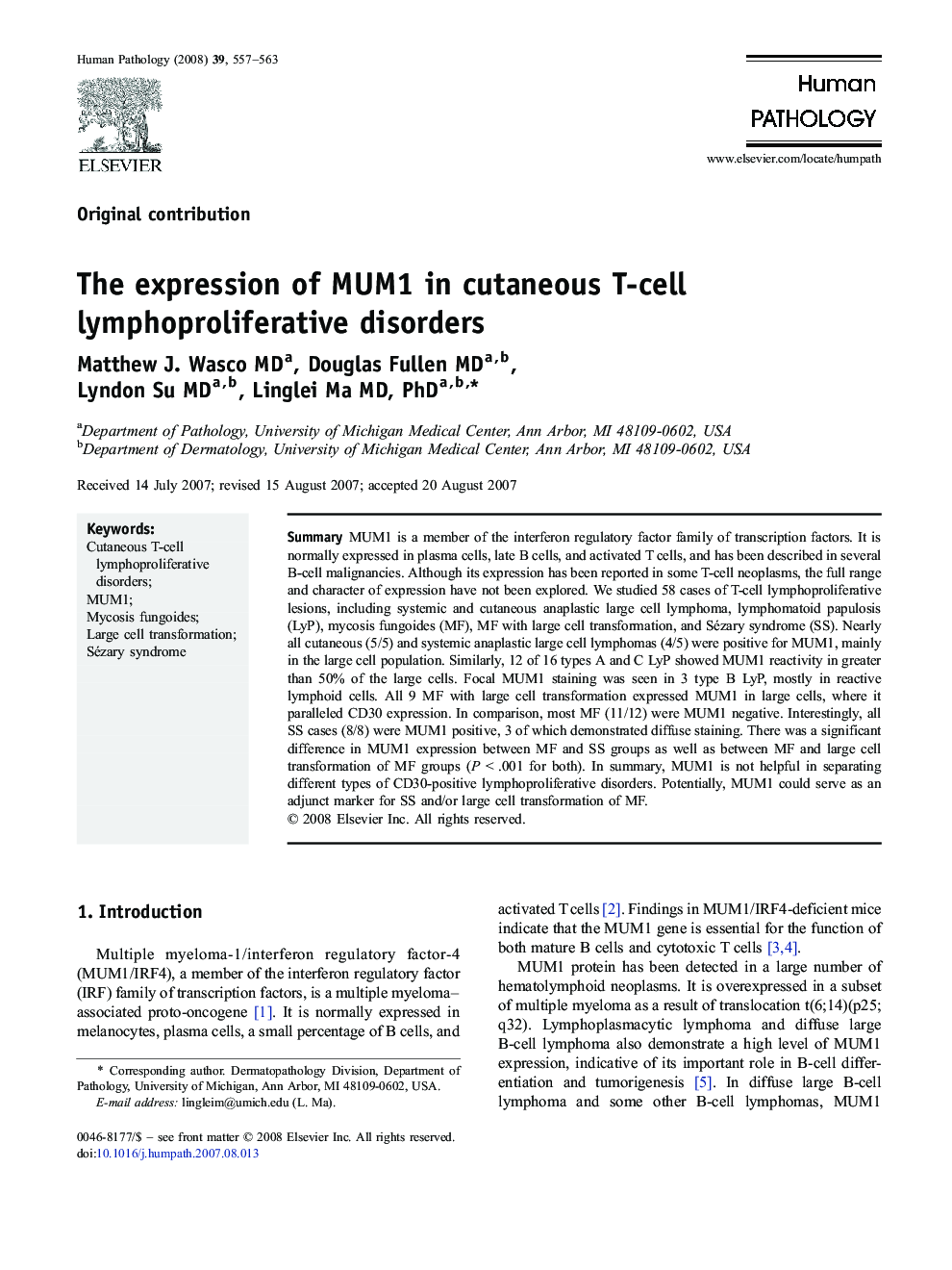| Article ID | Journal | Published Year | Pages | File Type |
|---|---|---|---|---|
| 4134942 | Human Pathology | 2008 | 7 Pages |
SummaryMUM1 is a member of the interferon regulatory factor family of transcription factors. It is normally expressed in plasma cells, late B cells, and activated T cells, and has been described in several B-cell malignancies. Although its expression has been reported in some T-cell neoplasms, the full range and character of expression have not been explored. We studied 58 cases of T-cell lymphoproliferative lesions, including systemic and cutaneous anaplastic large cell lymphoma, lymphomatoid papulosis (LyP), mycosis fungoides (MF), MF with large cell transformation, and Sézary syndrome (SS). Nearly all cutaneous (5/5) and systemic anaplastic large cell lymphomas (4/5) were positive for MUM1, mainly in the large cell population. Similarly, 12 of 16 types A and C LyP showed MUM1 reactivity in greater than 50% of the large cells. Focal MUM1 staining was seen in 3 type B LyP, mostly in reactive lymphoid cells. All 9 MF with large cell transformation expressed MUM1 in large cells, where it paralleled CD30 expression. In comparison, most MF (11/12) were MUM1 negative. Interestingly, all SS cases (8/8) were MUM1 positive, 3 of which demonstrated diffuse staining. There was a significant difference in MUM1 expression between MF and SS groups as well as between MF and large cell transformation of MF groups (P < .001 for both). In summary, MUM1 is not helpful in separating different types of CD30-positive lymphoproliferative disorders. Potentially, MUM1 could serve as an adjunct marker for SS and/or large cell transformation of MF.
